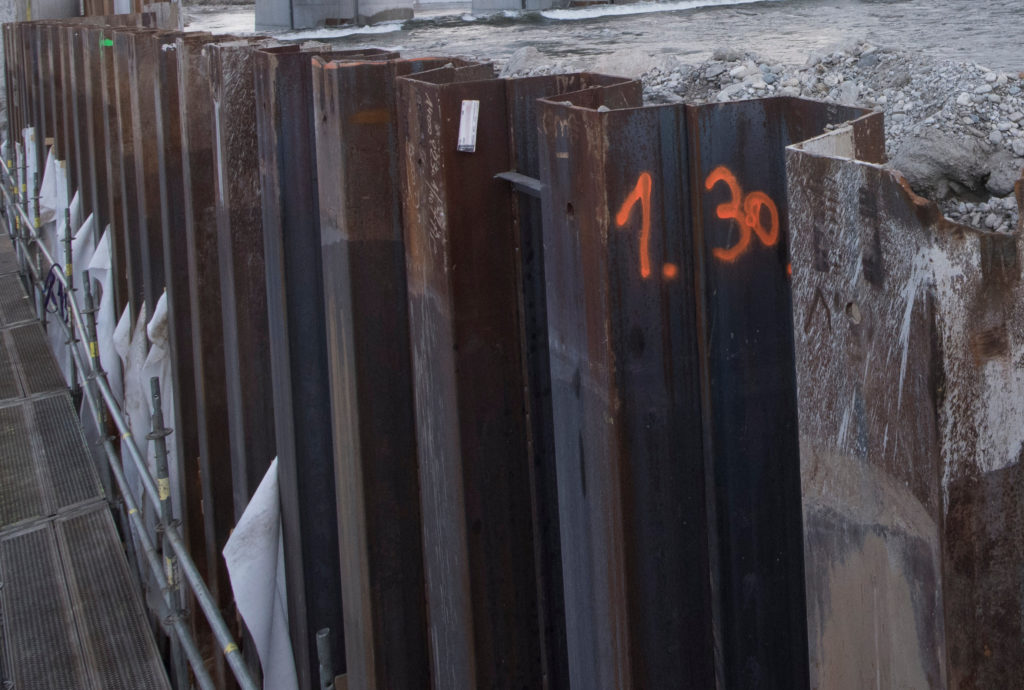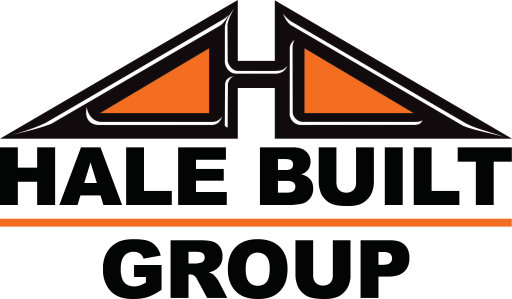Professional Sheet Piling in NJ
Deep foundation construction projects and many other types of construction often involve relocating ground material. When soil, sand, gravel, silt, peat, rocks, etc., are dug into or relocated, sheet piles are often the go-to solution to keep them at bay. Contractors widely use sheet piles in "sheet shoring" construction due to their versatility as temporary or permanent environmental bulwarks.
This article, opportunely for prospective clients and contractors, delves into everything regarding sheet piling, from basic knowledge to damage identification and cost insights.
Please continue reading for more information on sheet piling, or contact us to get started on your environmental remediation service with a free estimate.
What Is Sheet Piling?
Sheet piling involves driving thin, interlocking steel, wood, or vinyl sheets into the ground to create a stable barrier for earth and water retention.
This method is vital in construction for projects requiring deep foundations, such as buildings, bridges, and waterfront structures. It supports and prevents soil erosion and protects against water ingress during excavation and construction.
Sheet shoring, closely related to sheet piling, temporarily supports a structure, trench, or excavation with shores (props) to prevent collapse. Together, shoring and sheet piling techniques ensure the safety and stability of construction sites, particularly in areas with loose soil or near water bodies.
Sheet piling falls into two separate categories: temporary and permanent installations. Temporary sheet piles are used during construction to secure the excavation site. Contractors remove these piles once the permanent structure is complete.
In contrast, permanent sheet piles remain in place, serving as a long-term solution for ground and water retention and structural stability. This method is an efficient, cost-effective solution for managing ground materials such as clay, sand, and gravel, safeguarding the construction site and adjacent properties.
Advantages of Sheet Piling
Sheet piling offers numerous benefits for shoring and lagging in construction projects. Here are some of the key advantages:
- Stability: Sheet piles provide significant stability to construction sites by supporting vertical loads and retaining soil, making them ideal for excavations and deep foundations.
- Efficiency: The installation process of sheet piling is relatively quick and efficient, especially compared to traditional construction methods. This efficiency can lead to reduced project timelines and cost savings.
- Protection Against Environmental Factors: Sheet piling is a robust barrier against water ingress, making it essential for projects near water bodies. It helps manage groundwater flow and prevents flooding, which is crucial for maintaining the integrity of the construction site.
- Flood Defense: In areas prone to flooding, sheet piling is an effective defense mechanism. Contractors use these to construct flood walls and barriers that protect infrastructure and residential areas from water damage.
- Erosion Control: Sheet piling is critical in erosion control by preventing soil movement and loss. It also protects riverbanks, coastal areas, and slopes from degradation.
- Versatility: Sheet piles can be used in various soil types and for various applications, from temporary shoring to permanent earth retention structures. They can be adapted to meet the specific needs of each project.
Disadvantages of Sheet Piling
While sheet piling has many advantages, there are also some disadvantages to consider:
- Noise and Vibration: The installation of sheet piles often involves heavy machinery that can produce significant noise and vibration, potentially causing disturbance to nearby residents and structures.
- Installation Challenges: In certain ground conditions, particularly hard or rocky soils, driving sheet piles can be challenging and may require additional preparation or alternative installation methods, such as pre-drilling.
- Corrosion: Steel sheet piles are susceptible to corrosion over time, especially in aggressive environments like saltwater. The saltwater affects their longevity and structural integrity, requiring maintenance or protective measures.
- Cost: While sheet piling can be cost-effective in many scenarios, the initial investment for the materials and installation equipment can be high, especially for permanent structures that require corrosion-resistant materials.
Understanding these advantages and disadvantages can help make informed decisions when considering sheet piling for construction projects, ensuring the method aligns with the project's requirements, environmental considerations, and budget.
When to Consider Sheet Piling Services in NJ
Sheet piling is essential for stability and integrity in various construction scenarios. Here are specific situations and signs that highlight the need for sheet piling:
Situations Requiring Sheet Piling:
- Deep Excavations: Necessary for underground projects to prevent excavation collapse.
- Unstable Soil Conditions: Acts as a retaining wall in loose soil areas, ensuring site safety.
- Waterfront Structures: Prevents erosion and water intrusion in projects near water bodies.
- High-Risk Flooding Areas: Serves as a flood barrier to protect against water damage.
Signs for Sheet Piling Support in Existing Structures:
- Visible Soil Erosion: Indicates the need for soil stabilization and foundation protection.
- Water Seepage: Suggests the requirement for a waterproof barrier in lower levels or basements.
- Structural Movement or Cracks: Signs of unstable ground conditions needing stabilization.
- Expansion of Existing Structures: Essential when increasing the load on the ground to support the additional weight.
Identifying these scenarios can help decide the necessity of sheet piling to prevent future issues and ensure structural safety.
Types of Sheet Piling
Sheet piling comes in various materials, each suited to different project needs and environmental conditions. Here's a brief overview:
- Steel: Highly durable and robust, ideal for heavy-duty applications like significant construction projects and waterfront barriers. Steel sheet piles resist driving stresses, water, and soil pressure.
- Vinyl: Lightweight and resistant to corrosion, making them suitable for projects with environmental concerns or where metal corrosion is a risk, such as in marine applications.
- Wood: Used for temporary structures or where the piling can be removed post-project. Wood piles are less durable than steel or vinyl but are cost-effective for short-term use.
Comparison of Sheet Piling Techniques
- Secant Pile Walls: These consist of overlapping concrete piles to create a continuous, watertight wall. They are ideal for deep excavations and provide structural support, especially in soft soils.
- Soldier Pile Walls (H/I Beam Shoring): These utilize vertical steel beams with horizontal lagging (wood, concrete, or steel). They are suitable for both temporary and permanent shoring and offer flexibility in installation and cost-effectiveness.
- Tangent Pile Shoring: Similar to secant walls but without overlapping, piles are constructed side by side. This method is effective for soil retention and supporting excavations, with quicker installation than secant pile walls.
Each type of sheet piling and sheet shoring technique offers distinct advantages, and the choice depends on project requirements, soil conditions, and environmental considerations.
Our Sheet Piling Installation Process
Installing sheet piles is a critical process in construction that requires precision, expertise, and the right equipment. Here's a simplified step-by-step guide to how we install and drive sheet piles and considerations for different types of excavations.
Step 1: Site Assessment
Initial Evaluation: We assess the site conditions, including soil type, groundwater levels, and proximity to existing structures. These tests help determine the most suitable sheet piling material and installation technique.
Step 2: Engineering and Design
Shoring Design: Our engineering team designs the shoring system based on the site assessment. Design considerations include deciding between deep and shallow excavations and tailoring the design to meet the project's specific needs.
Step 3: Preparation
Pre-Installation Setup: We prepare the site for installation, which may involve clearing the area, setting up access routes, and positioning the installation equipment.
Step 4: Driving Sheet Piles
Installation: The sheet piles are driven into the ground to the specified depth using specialized equipment like vibratory hammers, hydraulic presses, or impact hammers. The method chosen depends on the soil condition and environmental impact considerations.
Step 5: Verification
Quality Assurance: After installation, we verify the integrity and alignment of the sheet piles, properly interlocking them and ensuring they meet the engineering specifications.
Step 6: Additional Support
Bracing and Anchoring: For deeper excavations or softer soils, contractors may install additional supports, such as walling beams or tieback anchors, to provide extra stability to the shoring structure.
Considerations for Deep vs. Shallow Excavations
Here are a few considerations to ponder when choosing between deep and shallow excavation sheet piling:
- Deep Excavations: Require thorough engineering to design a shoring system that can withstand more significant soil pressures and potential groundwater issues. More robust materials and additional bracing are often necessary.
- Shallow Excavations: They might not require as complex or robust a shoring system but still need careful planning to ensure safety and effectiveness.
The Role of Engineering for Shoring Design in NJ
Engineering expertise is crucial in designing a shoring system that is safe, efficient, and tailored to each project's specific challenges. The engineering process involves analyzing soil data, predicting structural loads, and ensuring compliance with all relevant construction codes and standards. This comprehensive approach ensures the longevity and stability of the installed sheet piling system.
The Average Cost of Sheet Piles in NJ
Sheet piling costs in New Jersey can vary widely, primarily due to factors such as the choice of materials (steel, vinyl, or wood), the project's scale, and specific site conditions. A basic reference point for cantilevered sheeting projects less than 15 feet deep starts at about $40 per linear foot. This cost may rise significantly with the depth of the excavation and if additional structural supports, such as bracing or tiebacks, are necessary for stability.
Factors Influencing Sheet Piling Costs
- Material Choice: Steel, vinyl, and wood sheet piles vary in price. Steel is the most durable and expensive, followed by vinyl and wood.
- Project Scale and Mobilization: Smaller projects might see a higher per-unit cost due to mobilization and setup expenses. A rough estimate for setup could range from $20,000 to $30,000, depending on the contractor and equipment.
- Permanent vs. Temporary: Permanent installations that leave sheet piles in place generally cost more due to material durability requirements than temporary shoring solutions.
- Site Conditions: Hard or rocky soils requiring pre-drilling or specialized equipment can elevate costs. Likewise, accessibility issues or environmental protections can add to the project price.
- Design Specifications: The strength parameters and design life specified by engineers affect the type of sheet piling used and its cost. Opting for a specific section modulus and steel grade or designing by moment allows for more competitive bidding but requires clear communication of needs.
- Additional Supports: Projects needing tieback anchors or bracing due to depth or soil pressure face higher costs. Estimates suggest that tiebacks alone cost about $10 to $20 per exposed square foot (SF) of wall face, with overall costs ranging from $30 to $70 per SF for tied or braced walls.
Contact Us For A Free Estimate on Sheet Piling Services in NJ
Ready to secure your property with top-notch sheet piling and sheet shoring solutions? Contact our Hale Built Group, which offers free estimates and foundation inspections in Maryland, D.C., Virginia, New Jersey, New York, Pennsylvania, and Delaware.
Our experienced structural engineers are ready to assist with your construction needs, ensuring stability and precision.
Contact us today to schedule your free estimate or inspection and get started.

